 Florida could be considered diverse ever since its infancy. Claiming statehood in 1821, the region was inhabited by white settlers, natives, and a variety of Hispanic nationalities. With the Spanish having founded the state, it made sense. When one thinks of Floridian Cubans, they might think of places further south like Miami or even Tampa. However, I’m going to take a closer look at a family that settled in the northern portion of the state.
Florida could be considered diverse ever since its infancy. Claiming statehood in 1821, the region was inhabited by white settlers, natives, and a variety of Hispanic nationalities. With the Spanish having founded the state, it made sense. When one thinks of Floridian Cubans, they might think of places further south like Miami or even Tampa. However, I’m going to take a closer look at a family that settled in the northern portion of the state.
The Sanchez family immigrated to Florida in the mid-1800s, taking residence along St. John’s River that snakes south from Jacksonville all the way to Okeechobee. They purchased a farm at a place called Federal Point just a little up river from the bustling tourist port town of Palatka. Prior to 1875, the town was named Pilatka, which created some confusion between the port town and Picolata, which was also along the St. Johns River, but a little further north.

 Within the family were three daughters and two sons. Lola (born María Dolores c.1844), Francesca (Panchita), Eugenia, Emanuel, and Henry would have enjoyed a comfortable and exciting life near Palatka. The girls might have made weekly trips into town to walk the streets amongst the tourists to see the newly arrived merchandise. Amusements for the boys were abundant as well. One visitor wrote that amusements included “sailing, fishing, rowing, walking, riding in buggies and on horseback, whist, euchre, backgammon and hunting.” Families and individuals who couldn’t brave the colder climates of the north would holiday to Palatka for the winter.
Within the family were three daughters and two sons. Lola (born María Dolores c.1844), Francesca (Panchita), Eugenia, Emanuel, and Henry would have enjoyed a comfortable and exciting life near Palatka. The girls might have made weekly trips into town to walk the streets amongst the tourists to see the newly arrived merchandise. Amusements for the boys were abundant as well. One visitor wrote that amusements included “sailing, fishing, rowing, walking, riding in buggies and on horseback, whist, euchre, backgammon and hunting.” Families and individuals who couldn’t brave the colder climates of the north would holiday to Palatka for the winter.
Then came Secession in January of 1861. Though much of the battling took place north of Palatka, this didn’t spare it the ravages of war. They might not have been hampered so much by the blockade around the whole of Florida and the Confederacy, but steamboat travel became a patriotic endeavor. Supplies were carried up north for the Confederacy, and tourism took a huge hit. Like many families within the Confederacy, the era of glitter and prosperity was drawing to a bloody close. Mingled in with the steamboat traffic were now military gunboats with their loaded cannons pointed toward the banks.
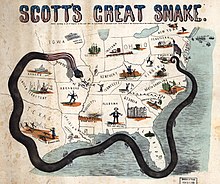 By 1862, the Union forces encountered little resistance in Florida. This is due to the fact that many of its troops were sent to the eastern and western fronts of the war, leaving militia and homeguards to defend their cities. The Federals occupied the area around St. Johns River, including Jacksonville and St. Augustine along the coast. Palatka was also taken, and thanks to some of the residents that were still left, the town was not fired upon after Confederate cavalry were supposedly spotted. The town was captured, nonetheless, and at one time over 5,000 Federal troops swarmed along the banks of the St. Johns River. That’s a tourism killer if there ever was one.
By 1862, the Union forces encountered little resistance in Florida. This is due to the fact that many of its troops were sent to the eastern and western fronts of the war, leaving militia and homeguards to defend their cities. The Federals occupied the area around St. Johns River, including Jacksonville and St. Augustine along the coast. Palatka was also taken, and thanks to some of the residents that were still left, the town was not fired upon after Confederate cavalry were supposedly spotted. The town was captured, nonetheless, and at one time over 5,000 Federal troops swarmed along the banks of the St. Johns River. That’s a tourism killer if there ever was one.
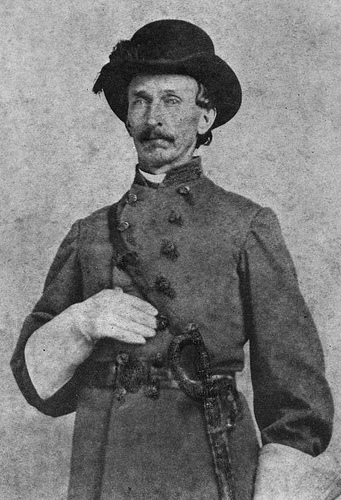
One strong thread of resistance, however, existed with Captain John Jackson Dickison. A native of Virginia, he had transplanted himself into central Florida around Ocala (slightly southwest of Palatka) and bought himself a plantation he named “Sunnyside”. At the onset of the war, he excelled through the ranks and became captain of the Second Florida Cavalry, Company H. For his numerous engagements, he received high honors and commendations from his commanding officer, Major General Sam Johns. He also became known as the “Swamp Fox of the Confederacy” to civilians and soldiers on both sides of the engagement. Countless times he thwarted any Union advancement into the state past the St. Johns River, despite being severely outnumbered.
Part of his successes can be attributed, not to those who took up a rifle and musket against the Union, but by those individuals who risked their lives and wellbeing to secreting information to the captain and other Confederate units skirmishing in the area.

The Sanchez family could be numbered amongst these Confederate sympathizers. Their position along the eastern bank of the St. Johns River put them in a prime spot. Not to mention, their country’s enemy occupied their home from time to time. According to a 2008 article in the Columbia (SC) Star, written by William D. “Bill” Chisolm, “it was usual for Yankee officers to visit at the Sanchez home. The girls were cordial and gained some protection from thieving [Union] soldiers. Though the conversations were light and airy, and the girls often played the guitar and sang, they were able to glean information and feed it to the Confederates.”
After a while, Union officers began to realize that the Swamp Fox couldn’t be duping them all on his own. They realized that there was a leak of information somewhere, and all families in and around Palatka came under scrutiny. The Sanchez family might have been in more serious danger, since one of their own sons served in the Confederate army. The old and invalid patriarch, Mauritia, was then arrested for espionage and sent to Fort San Marcos (Castillio de San Marcos) in Union occupied St. Augustine.
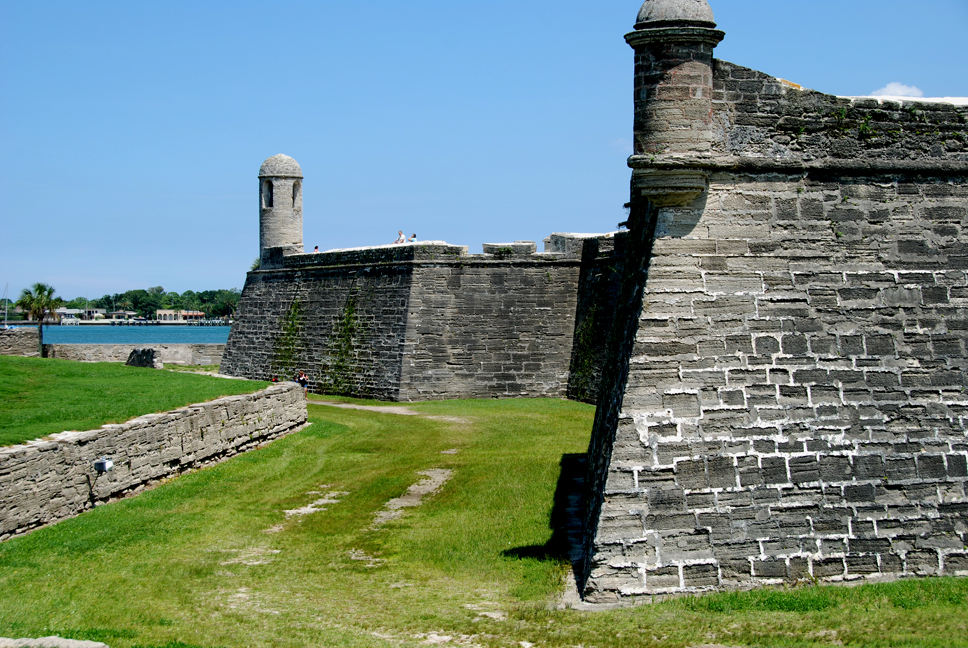
This incensed the family, particularly Mauritia’s three daughters. And if they weren’t spies before, they were now. Of course, they had to keep up appearances for the Union soldiers who routinely came to search the home for any evidence. For, despite the arrest of Mr. Sanchez, the Swamp Fox was still getting the better of them time after time.
The evening of May 21st, 1864 began like any other for the family. Three Federal officers came to keep an eye on the Sanchez women and were invited to stay for a hearty dinner (or, as hearty as a Confederate dinner could be at this time during the war). This paid off, because while dinner was being prepared, Lola overheard a conversation on the front porch.
The Union army with their gunboats, planned to initiate a surprise attack upon the Swamp Fox’s men at Camp Davis early the next morning while the rebels slept. From there, they planned to conduct foraging raids to collect much needed supplies for the troops in St. Augustine, since Captain Dickison would be taken care of.
 Realizing the importance of this news, Lola held a meeting with her sisters. Captain Dickison was stationed at his camp just a mile and a half away, but the path would prove difficult and dangerous since it would take them across St. Johns River. It was agreed that Eugenia would continue preparations for dinner and keep up the deception that Lola was still helping, while Panchita distracted their Yankee guests with song and conversation as they always had before. This would allow Lola to sneak away on horseback.
Realizing the importance of this news, Lola held a meeting with her sisters. Captain Dickison was stationed at his camp just a mile and a half away, but the path would prove difficult and dangerous since it would take them across St. Johns River. It was agreed that Eugenia would continue preparations for dinner and keep up the deception that Lola was still helping, while Panchita distracted their Yankee guests with song and conversation as they always had before. This would allow Lola to sneak away on horseback.
 Battling through the forest, dense with water oak, pine, scrub palmetto and jasmine vines, she raced for almost a mile to the ferryboat landing. Leaving her horse with the ferryman and his wife – whom would have known her and her family quite well – she procured a small boat and paddled across St. Johns River by herself with a full moon to light her path.
Battling through the forest, dense with water oak, pine, scrub palmetto and jasmine vines, she raced for almost a mile to the ferryboat landing. Leaving her horse with the ferryman and his wife – whom would have known her and her family quite well – she procured a small boat and paddled across St. Johns River by herself with a full moon to light her path.
Upon reaching the other side, she was stopped by a Confederate picket. It was likely that the soldier would have also known her. Relaying the urgency of her mission, the soldier was convinced to let her through to see the captain. He even lent her his horse – which was against protocol – to speed her along the way.
She found Captain Dickison and told him of the Federals’ plans immediately. This heads-up gave him time to mobilize his troops and once again, foil the enemy’s scheme. Within less than two hours, Lola Sanchez had made her trip to Camp Davis and back home without the officers ever realizing she was missing.
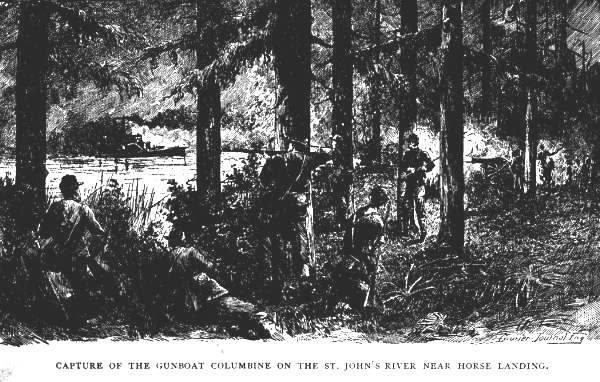 Her brave and daring act of espionage was the catalyst for the successful Battle of Horse Landing. Captain Dickison took his troops across the river that night and took position at a strategic bend in the river. From here, they saw the side-wheeled Union gunboat, the USS Columbine, and open fired. The skirmish that ensued on May 22nd would go down in Civil War history as the only instance where a cavalry unit had taken down an enemy gunboat. With the help of artillery, the Battle at Horse Landing was numbered amongst the few instances in which a Union warship was captured by land-based Confederate forces during the Civil War.
Her brave and daring act of espionage was the catalyst for the successful Battle of Horse Landing. Captain Dickison took his troops across the river that night and took position at a strategic bend in the river. From here, they saw the side-wheeled Union gunboat, the USS Columbine, and open fired. The skirmish that ensued on May 22nd would go down in Civil War history as the only instance where a cavalry unit had taken down an enemy gunboat. With the help of artillery, the Battle at Horse Landing was numbered amongst the few instances in which a Union warship was captured by land-based Confederate forces during the Civil War.
In the book, J. J. Dickison: Swamp Fox of the Confederacy, author John J. Koblas recounts the infamous battle: “The second volley of Confederate fire cut the wheel chains of the Columbine, taking out the steering and soon stranding it on a sandbar in the river. The Columbine carried a pair of thirty-two-pounder cannons and 148 men, all with small rifle arms, and these weapons returned fire on the concealed Confederates. The battle lasted about forty-five minutes.”
 Acting Ensign Frank Sandborn went ashore and surrendered the ship. Later, he had this to say about the battle, “I could discover nothing suspicious until directly abreast the landing,” Sanborn said in his official report, “distant about 100 yards, when two pieces of artillery, concealed by the shrubbery and undergrowth, almost simultaneously opened fire upon me. I instantly gave orders to ‘hook on,’ but unfortunately the second shot of the enemy cut my wheel chains, and at the same time the pilot abandoned the wheel and jumped over the bow. The vessel almost immediately went ashore upon a mud bank.”
Acting Ensign Frank Sandborn went ashore and surrendered the ship. Later, he had this to say about the battle, “I could discover nothing suspicious until directly abreast the landing,” Sanborn said in his official report, “distant about 100 yards, when two pieces of artillery, concealed by the shrubbery and undergrowth, almost simultaneously opened fire upon me. I instantly gave orders to ‘hook on,’ but unfortunately the second shot of the enemy cut my wheel chains, and at the same time the pilot abandoned the wheel and jumped over the bow. The vessel almost immediately went ashore upon a mud bank.”
Union Colonel William H. Noble, commander of the 17th Connecticut Infantry, was wounded and taken prisoner along with 66 of the 148 onboard the Columbine. One third of these men were injured in the engagement. After the gunboat was stripped of supplies by Captain Dickison’s men, the boat was sank on the St. Johns River to avoid being taken back by the U.S. Navy gunboat USS Ottawa, which was only about five miles upstream.
 All those captured were sent north to Andersonville Prison. Miraculously there were no Confederate casualties in this engagement. In honor of the Sanchez sisters, a Union pontoon boat was captured a short time after the battle and renamed “The Three Sisters” for Lola, Panchita, and Eugenia.
All those captured were sent north to Andersonville Prison. Miraculously there were no Confederate casualties in this engagement. In honor of the Sanchez sisters, a Union pontoon boat was captured a short time after the battle and renamed “The Three Sisters” for Lola, Panchita, and Eugenia.
The war would rage for another year, providing the Sanchez sisters even more opportunities to spy upon the Union forces, and save the lives of their countrymen. The same year and farther downriver, Confederates again sank a Union boat, the “Maple Leaf”, which struck a floating keg filled with explosives (an underwater mine) near Julington Creek, south of Jacksonville.
Later, Panchita would have her turn to prove her bravery. She took an expedition to St. Augustine herself to plead for the release of her father. She even went as far as to offer herself as a replacement. This would have been a bold offer to make, considering that she would be trading her comfortable house and clean clothes for a dirty and damp prison cell. Thankfully, it wouldn’t come to that. Mr. Sanchez was released and they were both permitted a safe journey back to their farm at Federal Point.

By April of 1865, the war was over, but life would never be the same for those along St. Johns River. Tourism did return to Patalka, but perhaps not in the same way as before. New hotels were built to accommodate guests and new industries flourished to help build Florida back up to the state it had been in before the war. Steamers ran up the Ocklawaha River to Eustis, Leesburg and Silver Springs, or the St. Johns River to Enterprise and Sanford. Industries included logging, raising cattle and hogs, and the traditional orange groves.

The three sisters, also recovered from the war in the best style possible, by marrying former Confederate officers. Lola married Emmanuel Lopez, who had served in Co. B, 3rd Florida Infantry, known as “The St. Augustine Blues.”, and together they had a daughter named Leonicia Lopez born in St. Augustine. Also with the “St. Augustine Blues” was Albert Rogero, who married Eugenia. Panchita married Captain John R. Miot and moved to South Carolina, where they had six children. Miot had served in the regiment led by General Wade Hampton on the eastern front in Virginia.
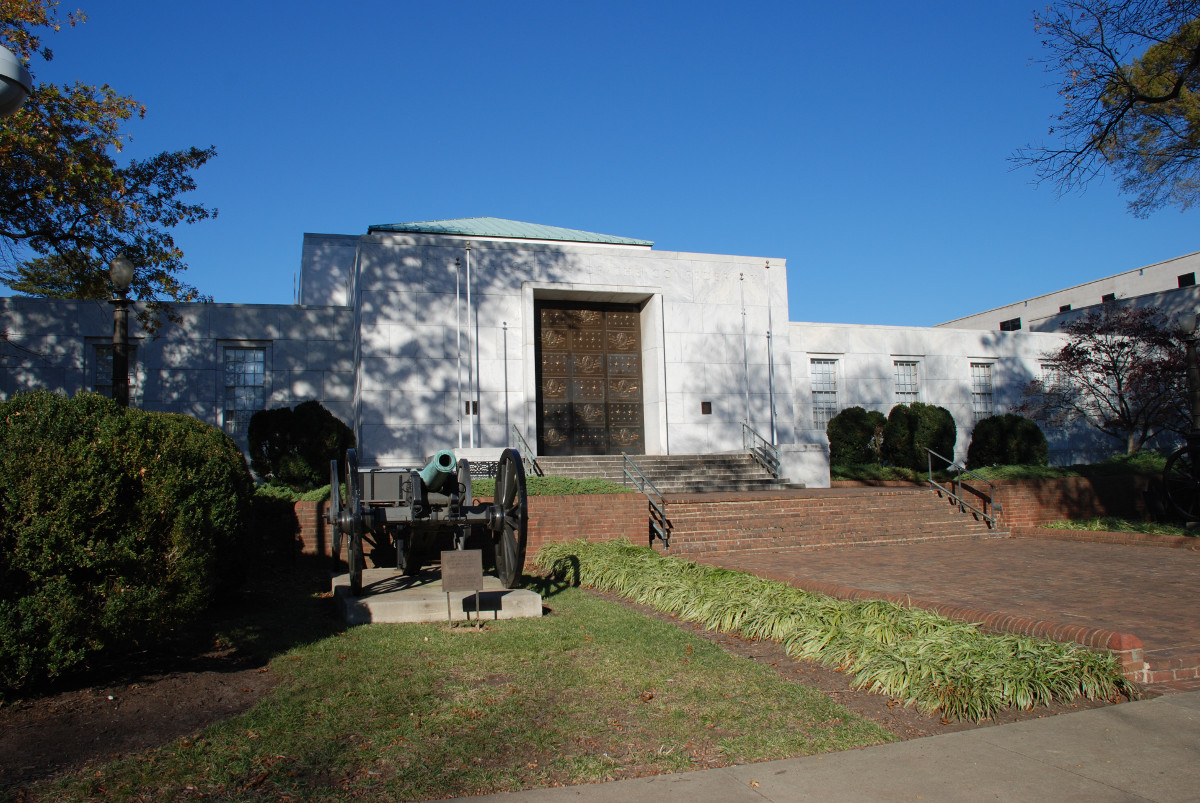
Resources:
http://www.thomaslegion.net/americancivilwar/floridawomencivilwar.html
https://en.wikipedia.org/wiki/Lola_Sánchez_(Confederate_spy)
http://kidnappingmurderandmayhem.blogspot.com/2012/05/lola-sanchez-confederate-spy.html
https://www.abbevilleinstitute.org/review/forgotten-heroines-of-the-confederacy/
https://www.geni.com/projects/Cuban-and-Other-Hispanic-and-Minorities-Confederate-Soldiers/24842
https://en.wikipedia.org/wiki/St._Johns_River
https://en.wikipedia.org/wiki/Palatka,_Florida
https://tools.wmflabs.org/geohack/geohack.php?pagename=Armstrong,_Florida¶ms=29.7619_N_81.4481_W_type:city
https://en.wikipedia.org/wiki/John_Jackson_Dickison
https://en.wikipedia.org/wiki/USS_Columbine_(1862)


Sanchez family was not from Cuba. Lola, her sisters and both of her parents were born in St. Augustine, Florida. None of them ever set foot in Cuba. They are descendants of Jose Sanchez de Ortigosa, who came to St. Augustine from Ronda, Spain in 1710. My grandmother was a Sanchez, born in St. Augustine in 1901. The sisters are my third cousins four times removed.
The story passed down has been significantly embellished — has quite a few holes in it.
LikeLike